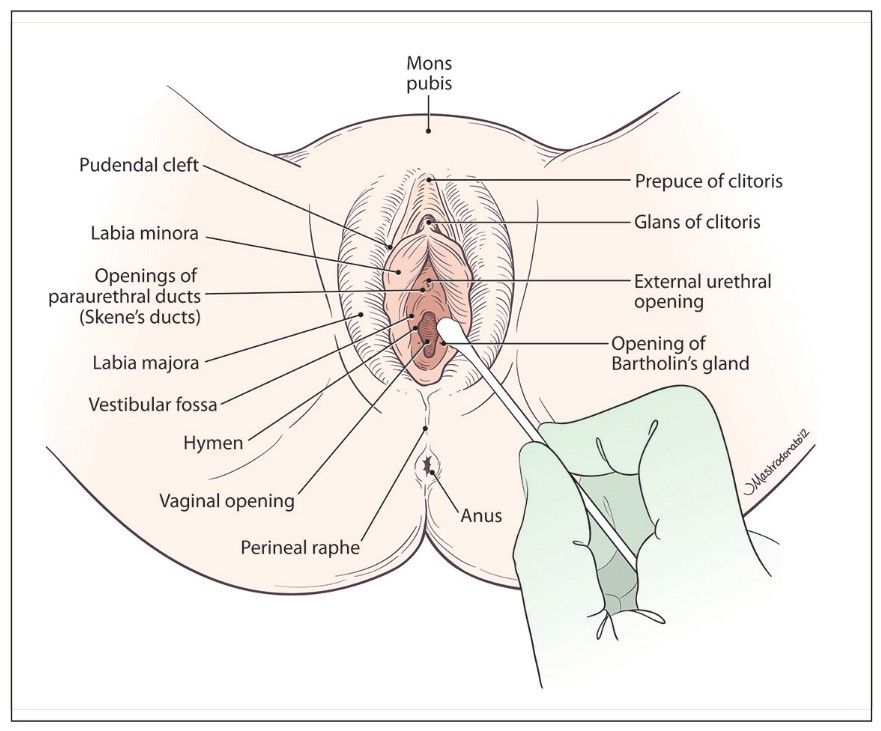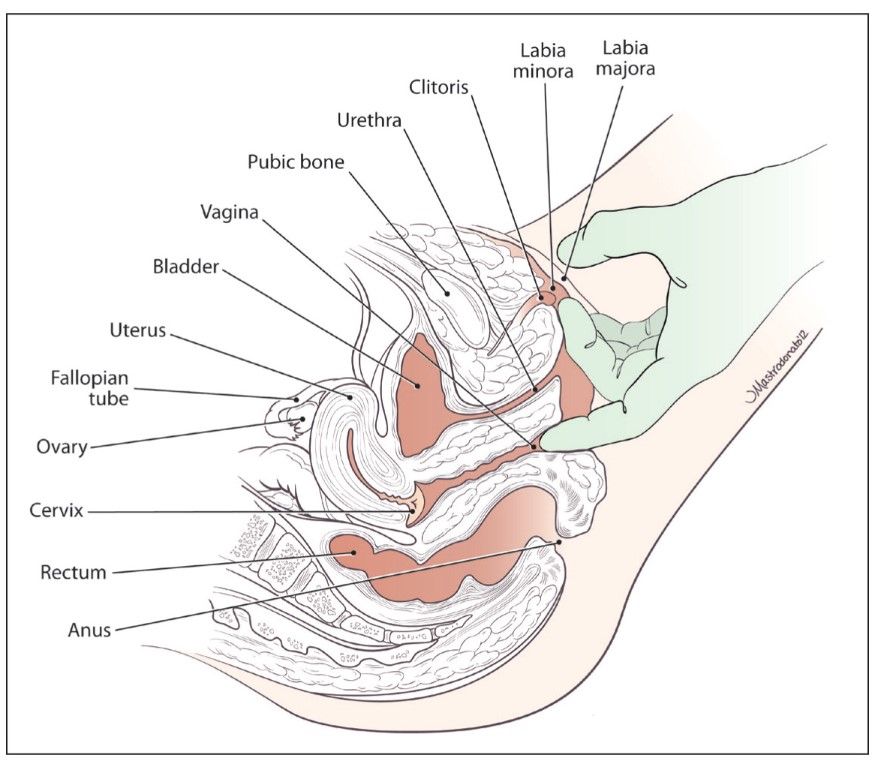Dyspareunia, also known as painful intercourse, is one of the most frustrating sexual conditions to endure. It can leave you feeling very isolated and alone because there are so few resources available to discuss this condition openly. But there are things you can do to treat your dyspareunia and improve your sex life!
In this article, you’ll learn about the causes of dyspareunia, symptoms associated with it, diagnosis, treatments and exercises that may be beneficial, and more.
What is dyspareunia?
Meaning painful intercourse, dyspareunia is a common female sexual dysfunction. The pain can range from mild discomfort to severe burning. Women suffering from dyspareunia may have a hard time getting aroused and often become anxious about sex.
This anxiety can lead to more pain and difficulty with arousal and orgasm. While it is not a life-threatening condition, it can affect your relationship if left untreated. Don’t worry though – there are things you can do!
Causes of dyspareunia:
Sex can be painful. Vaginal penetration during sex can cause pain that may interrupt sexual arousal. This painful condition is called dyspareunia.
Many women may experience it at some point in their lives. In fact, up to 30% of women report having experienced dyspareunia within their lifetimes, and 10%-20% say they’ve experienced it in the last year alone.
That’s a lot of people!
But why does it happen? And what causes dyspareunia?
There are many reasons for vaginal pain or discomfort during sex. Some common causes include:
- Vaginal dryness;
- Infections such as yeast infections or bacterial vaginosis;
- Allergies; and
- Irritation from soaps, perfumes, or lubricants.
If you’re experiencing any kind of vaginal pain or discomfort during intercourse, talk with your doctor. She can help identify any underlying medical conditions that could be causing your symptoms and provide treatment options if needed.
Symptoms of dyspareunia:
Painful sexual intercourse (dyspareunia) can be caused by a variety of issues. There are many factors that affect one’s risk for developing dyspareunia. Some causes include pregnancy, aging and menopause. People who experience diabetes may have a higher chance of experiencing pain during sex due to nerve damage.
Additionally, uterine fibroids, pelvic inflammatory disease and endometriosis are common causes of painful sex in women.
In men, prostate problems such as benign prostatic hyperplasia or prostatitis are often linked to painful sex. Men with heart conditions or high blood pressure should also see their doctor if they experience pain during sex.
These symptoms may indicate underlying health problems that need treatment. If you think you might have an underlying medical condition causing your dyspareunia, it is important to see your doctor right away so you can get proper treatment and care.
How can you diagnose dyspareunia?
The most important step in diagnosing dyspareunia is getting to know your body. It’s not uncommon for women with dyspareunia to have never had an orgasm before or to have difficulty reaching climax at times.
For that reason, figuring out how your body responds during sex can help determine if you have a condition like vaginismus or dyspareunia.
To do so, use your fingers to explore yourself and try masturbating. Pay attention to what feels good and what doesn’t.

If something hurts, stop doing it immediately and tell your doctor about it when you see him or her next time.

How to treat dyspareunia?
Women can experience discomfort or pain when having sex. This is known as dyspareunia and is defined as recurrent or persistent genital pain associated with sexual intercourse.
Although this condition may occur at any age and in many different circumstances, it occurs more frequently in post-menopausal women; a condition known as vulvovaginal atrophy causes vaginal tissue to become less elastic and more susceptible to irritation.
Another common cause of dyspareunia is endometriosis, which affects around 10% of women worldwide.
In endometriosis, cells from your uterus grow outside of your uterus and attach themselves to surrounding organs such as your ovaries, fallopian tubes and bladder.
These cells respond to hormonal changes just like normal uterine lining does, but they have no way of leaving your body so they build up and create scar tissue.
The constant growth and shedding cycle that these cells go through creates inflammation, resulting in painful periods (dysmenorrhea) as well as severe cramping during sex (dyspareunia).
Other potential causes of dyspareunia include infections like herpes or chlamydia, chronic illnesses such as diabetes and cancer treatments that interfere with hormone levels.
There are also psychological factors that can contribute to this condition, including depression and anxiety disorders.
If you’re experiencing symptoms of dyspareunia, you should see your doctor for a full evaluation. Your doctor will likely perform an exam to rule out underlying medical conditions as well as perform blood tests to ensure there are no underlying health issues contributing to your symptoms.
What are some remedies for painful intercourse?
There are a number of reasons why a woman might experience painful intercourse or dyspareunia. Here’s how to determine if you have this condition and what to do about it.
The first step in treating pain during sex is to see your doctor for an accurate diagnosis and ruling out any medical conditions that may be causing your symptoms.
If there is no medical condition that could be causing pain during sex, then there are several non-medical treatments for treating pain during sex which include: changing positions during sex, using lubrication and dilators.
Sex therapy may also help women who feel anxious or uncomfortable when they engage in sexual activity.
This can involve anything from learning how to communicate with their partner better, learning techniques to improve arousal and orgasmic ability, as well as techniques to manage their stress levels so that they are less likely to tense up and cause themselves more discomfort during sexual activity.
This information is not intended as a substitute for professional medical advice, diagnosis or treatment.
Exercises of dyspareunia (painful intercourse):
To eliminate dyspareunia due to vaginal dryness or irritation, try Kegel exercises. To perform Kegels: Contract your pelvic muscles (as if stopping urine flow) for 10 seconds then relax for a second. Repeat 10 times.
You should feel your vagina tighten around your fingers or while you’re contracting these muscles. Work up to doing 10 sets of 50 contractions daily over time to see significant results.
The goal is to increase blood flow and muscle strength in that area. Start with one set per day and work your way up as you become more comfortable. If you can’t do them on your own, ask someone to help. This may be difficult at first but it will get easier with practice.
Tips for dealing with dyspareunia in your relationship:
While many women experience painful sex from time to time, persistent pain during intercourse is known as dyspareunia. According to experts, dyspareunia refers to any type of pain felt by women during sexual intercourse.
Common symptoms include burning or stinging sensations in and around your vagina and anus. Some women experience discomfort even before penetration occurs. Other causes of painful sex are vaginismus, vulvodynia and endometriosis.
Vaginismus is involuntary spasm of your vaginal muscles. Vulvodynia causes chronic pain in your genital area, often described as feeling like a burning sensation.
Endometriosis is a condition where tissue similar to that which lines your uterus grows elsewhere in your body. It’s not uncommon for women who have undergone menopause to develop dyspareunia because they no longer produce estrogen, which lubricates their genitals.
A common cause of dyspareunia in younger women is an untreated yeast infection . Yeast infections occur when Candida albicans fungus grows out of control within your body.
Take away
Dyspareunia refers to recurrent or persistent genital pain that occurs before, during, or after sexual intercourse. The pain can be in the vaginal area and/or the pelvis, and it may feel sharp, burning, or like aching or cramping. It’s often accompanied by feelings of pressure, pain or discomfort deep inside the vagina and/or difficulty having an orgasm. Women who experience dyspareunia may avoid sex because they don’t want to experience this discomfort again.
If you’re suffering from dyspareunia, then most of these exercises can be done at home in as little as 10 minutes a day. And unlike surgery, there are no invasive procedures or long recovery times. So what are you waiting for? Get started with your exercises today and take back your life from painful sex!
If you’re having difficulty getting started on an exercise routine because of time constraints, start by doing simple stretches such as side leg raises while watching television. Gradually work up to jogging around your neighborhood several times per week (or even walking), and make sure to consult your doctor before starting any exercise routine.
- Related Articles:
- Fishy vaginal odor: How to get rid of smelly vagina?
- 8 Craziest things women can do with their vaginas!
- What is a vajacial? The unexpected treatment for better vaginal health!
References:
- Biopsychosocial profile of women with dyspareunia; Marta Meanaab and Yitzchak M. Binik; Volume 90, Issue 4, Part 1, October 1997, Pages 583-589.
- Evaluation and Treatment of Dyspareunia; Steege, John F. MD; Zolnoun, Denniz A.; Obstetrics & Gynecology: May 2009 – Volume 113 – Issue 5 – p 1124-1136.
- Deep dyspareunia: causes, treatments, and results; Ferrero, Simone; Ragni, Nicola; Remorgida, Valentino; Current Opinion in Obstetrics and Gynecology: August 2008 – Volume 20 – Issue 4 – p 394-399.
- Dyspareunia in Women; DEAN A. SEEHUSEN and DREW C. BAIRD.
